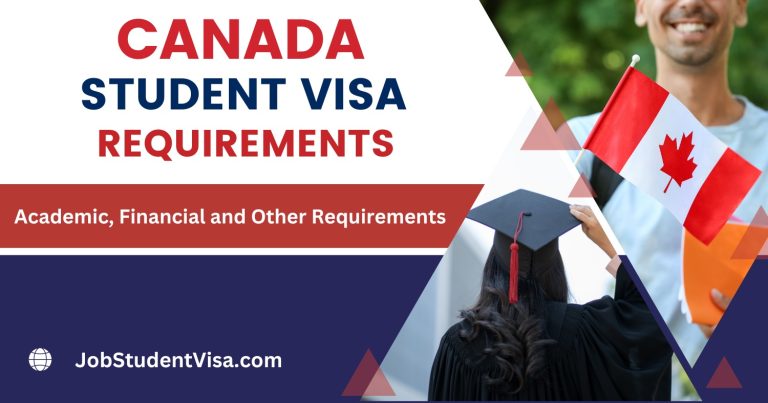The Rising Costs of Studying in Canada in 2024: Challenges for International Students
Major Challenges for Studying in Canada in 2024 for International Students
As we step into 2024, the landscape of Canadian higher education is encountering transformative challenges. This year marks a significant turning point for international students, as they face a complex matrix of new financial and regulatory hurdles. Canada, once a beacon of accessible, world-class education, is now at a crossroads, grappling with the impacts of its escalating housing crisis, the lingering economic ramifications of the COVID-19 pandemic, and the geopolitical aftershocks of the Ukraine conflict. These factors collectively contribute to an unprecedented reshaping of international study opportunities in Canada. For students and families worldwide, understanding and navigating these evolving dynamics is crucial for realizing their Canadian educational aspirations amidst the changing tides of 2024.
The Housing Crisis and Escalating Educational Expenses
The influx of international students in Canada has reached an all-time high, with numbers peaking at around 900,000 in 2023. This dramatic increase, while beneficial to the economy, has led to a significant housing shortage, with rental costs soaring across major cities. The government’s response – a planned reduction in the number of incoming students for the 2024 academic year – aims to alleviate some of these pressures. Moreover, the cost of education for international students has seen a substantial rise, with average tuition fees now ranging between 20,000 to 25,000 Canadian dollars annually. This escalation in both living and educational expenses is creating a financial barrier that could prevent many prospective students, especially those from middle-class backgrounds, from accessing Canadian education.

Financial Proofs and Increased Living Costs for Students
In response to these economic challenges, the Canadian government has revised the financial requirements for international students. From 2024 onwards, students will need to show they can cover 20,633 Canadian dollars for living expenses – a marked increase from the previous 10,000 dollars. This requirement, in combination with the heightened tuition fees, means international students must have access to a minimum of 50,000 Canadian dollars for their educational pursuits in Canada. The substantial financial burden imposed by these changes could potentially discourage a significant number of students, particularly those lacking robust financial support.
Work Hour Limitations and Financial Dependency
A critical policy change coming into effect in April 2024 will see international students limited to 20 hours of part-time work per week. This regulation caps their earning potential to approximately 1,200 Canadian dollars monthly, significantly impacting their ability to support themselves financially. As a result, international students will find themselves more reliant on their families to cover the bulk of their expenses, estimated to be around 30,000 Canadian dollars each year. This increased dependency highlights the financial strains and challenges faced by families of international students, underscoring the importance of having adequate financial resources.
The Impact on Post-Graduation Opportunities
Another dimension of this evolving scenario is the impact on post-graduation opportunities for international students. With the Canadian government focusing on reducing the influx of students and tightening work regulations, the pathways to permanent residency and employment opportunities post-studies are becoming more complex and uncertain. This uncertainty adds another layer of consideration for students planning their future in Canada.
Balancing Economic Needs and Educational Aspirations
The evolving educational landscape in Canada is creating a dichotomy between the country’s economic needs and the aspirations of international students. The rising costs associated with Canadian education and living, coupled with tighter work restrictions, are making it increasingly challenging for students from diverse economic backgrounds to pursue their studies in Canada. This situation necessitates a critical re-evaluation of policies to find a balance that supports both the economic benefits of international education for Canada and the accessibility for students worldwide. As Canada navigates this delicate balance, the hope is for a solution that continues to welcome international talent while addressing the economic and infrastructural challenges posed by such a large influx of students.
The evolving landscape of Canadian higher education in 2024 presents a complex and challenging environment for international students. The housing crisis, escalating educational expenses, and changes in financial requirements have created significant barriers for prospective students. The reduction in work hours and increased financial dependency on families further compounds these challenges. Additionally, uncertainties regarding post-graduation opportunities add to the complexity of the situation.
In this context, there is a pressing need for Canada to strike a balance between its economic interests and the aspirations of international students. Finding solutions that maintain the economic benefits of international education while ensuring accessibility for students from various financial backgrounds is crucial. As Canada navigates these intricate challenges, the hope is to create policies that continue to welcome international talent while addressing the housing, financial, and infrastructural issues posed by the substantial influx of students in 2024.
FAQs About Studying in Canada in 2024 for International Students
- What are the major financial challenges facing international students in Canada in 2024?
International students in Canada in 2024 are grappling with increased educational expenses and living costs. Tuition fees for international students have risen to an average of 20,000 to 25,000 Canadian dollars annually. Additionally, the Canadian government has raised the proof of financial requirement for living expenses to 20,633 Canadian dollars, significantly higher than previous years. - How is the housing crisis in Canada affecting international students?
The housing crisis in Canada, particularly in major cities, has led to a shortage of affordable accommodation options for students. With an all-time high influx of international students, rental costs have soared, making it more challenging for students to find suitable and affordable housing. - What changes have been made to work hour limitations for international students in Canada, and what impact does this have?
Starting from April 2024, international students in Canada will be limited to 20 hours of part-time work per week. This regulation reduces their earning potential and increases their financial dependency on their families, making it harder for them to support themselves while studying. - Are there any changes to post-graduation opportunities for international students in Canada in 2024?
With the Canadian government tightening regulations on student influx and work permits, pathways to permanent residency and employment opportunities post-graduation are becoming more complex and uncertain. This adds another layer of challenge for international students planning their future in Canada. - What is the Canadian government’s response to the educational challenges faced by international students, and how effective is it?
The Canadian government has implemented measures like reducing the number of incoming international students and increasing financial proof requirements. While these steps aim to alleviate some pressures, such as the housing crisis, they also create higher financial barriers for students, particularly those from middle-class backgrounds. - What needs to be done to balance the economic needs of Canada with the educational aspirations of international students?
Canada needs to re-evaluate its policies to find a balance that supports the economic benefits of international education while making it accessible to students from diverse economic backgrounds. This involves addressing housing, financial, and infrastructural challenges, ensuring the country continues to attract international talent without imposing undue financial burdens on students.






